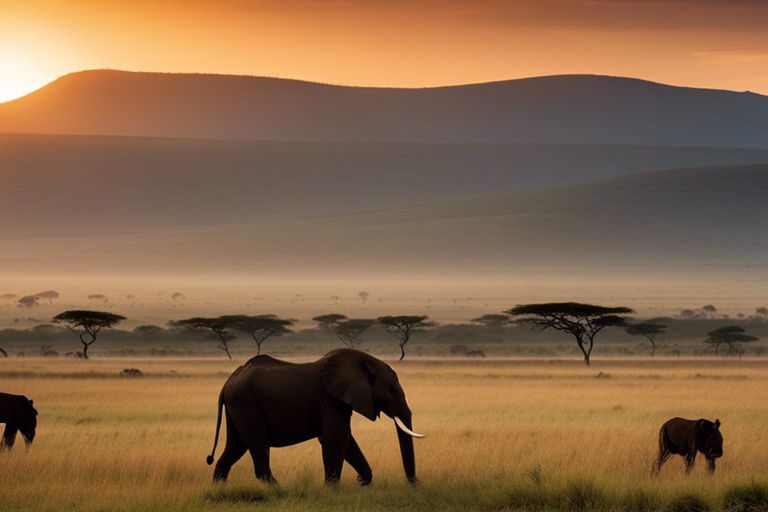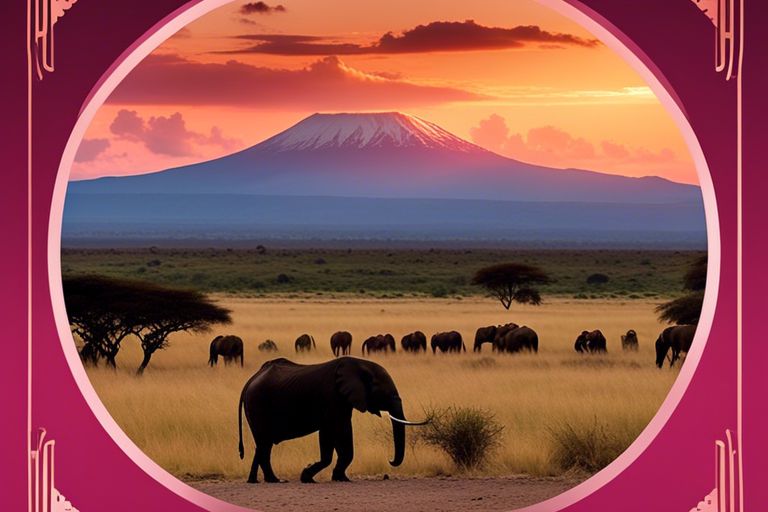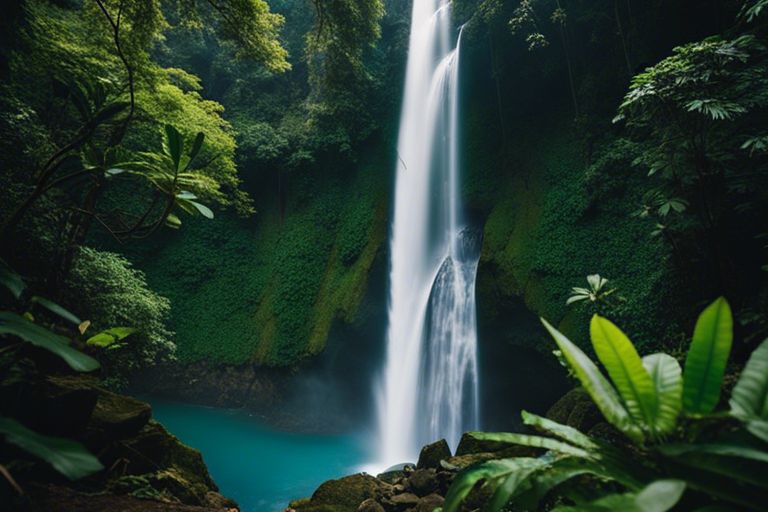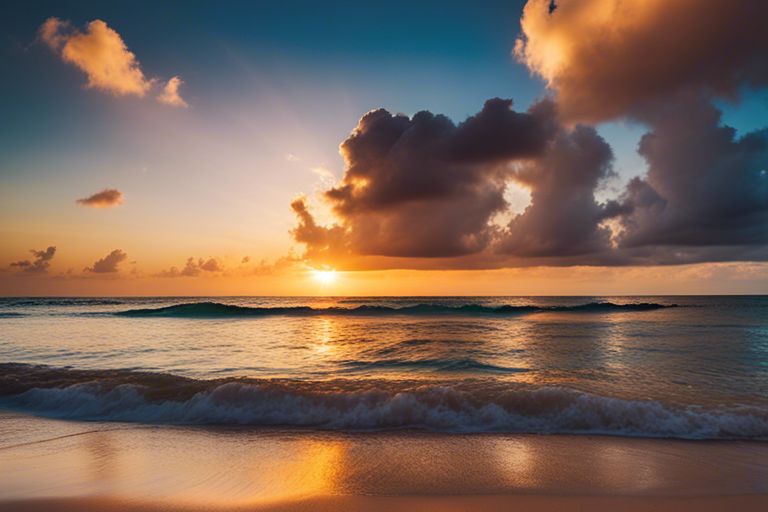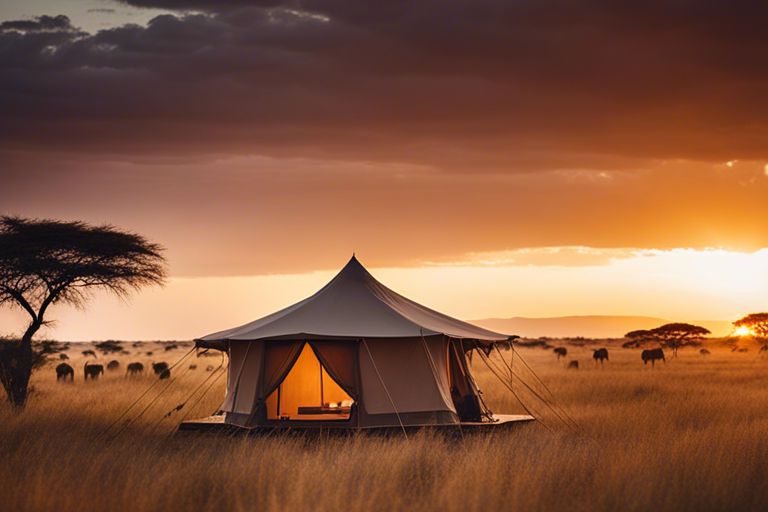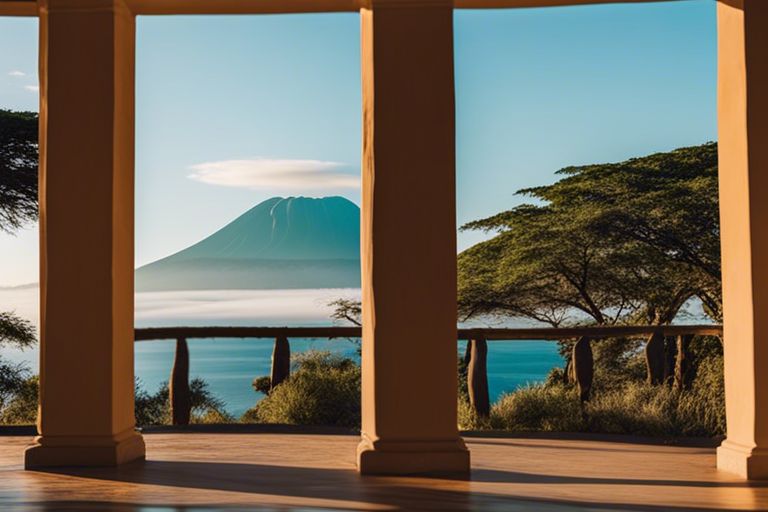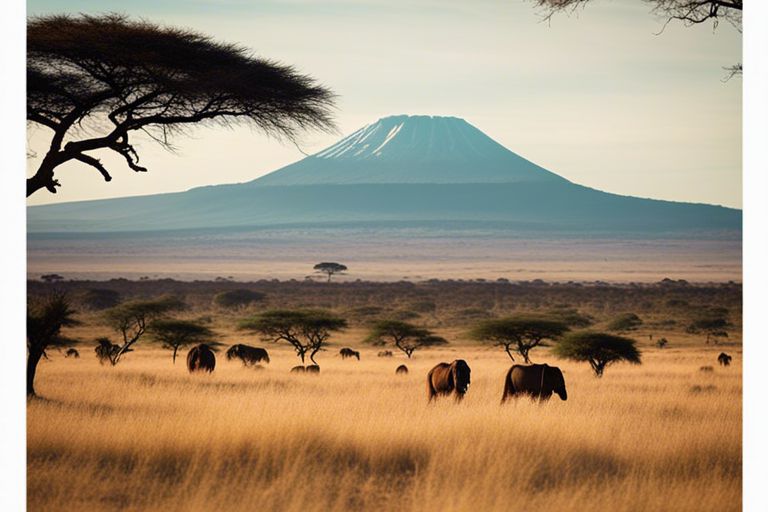The Ultimate Guide To Ngorongoro Crater Animals – What To Expect
Overlooking the stunning Ngorongoro Crater in Tanzania is like peering into an untouched paradise teeming with diverse wildlife. This comprehensive guide will walk you through what to expect when begining on a safari to this UNESCO World Heritage Site, home to a wide array of fascinating animals. From majestic lions and massive elephants to elusive leopards and vibrant flamingos, the Ngorongoro Crater offers an unparalleled opportunity to witness these creatures in their natural habitat. Join us as we explore into the wonders of the Ngorongoro Crater and discover the remarkable animals that call this stunning landscape home.
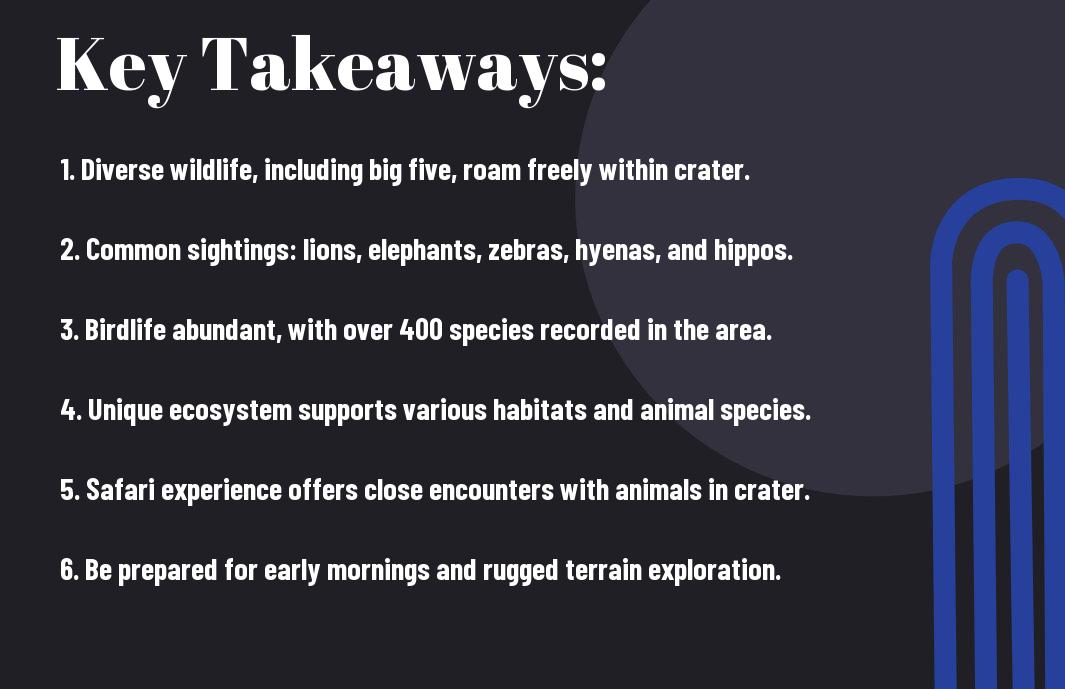
The Big Five of Ngorongoro
Lions in Their Natural Habitat
Habitat: Lions, known as the kings of the jungle, roam the vast grasslands and acacia woodlands of Ngorongoro Crater. These majestic creatures can often be spotted lazing in the shade of trees or hunting for prey in the open savannah. Keep your eyes peeled for the unparalleled thrill of witnessing a lion pride on the prowl.
The Elusive Black Rhino
With their solitary nature and mysterious allure, the black rhinos of Ngorongoro remain a rare sight for lucky visitors. These magnificent creatures, known for their distinctive hooked lips and pointed horns, prefer the cover of bushes and dense vegetation. Despite their elusive nature, conservation efforts have helped increase their numbers in the crater.
Plus, the black rhino’s presence is crucial in maintaining a balanced ecosystem within Ngorongoro Crater. Their grazing habits help shape the landscape and create habitats for a variety of other species. Witnessing a black rhino in its natural habitat is a truly unforgettable experience for any wildlife enthusiast.
Herbivores of the Crater
The Great Wildebeest Migration
On the plains of Ngorongoro Crater, visitors can witness the spectacular sight of the Great Wildebeest Migration. This annual event sees hundreds of thousands of wildebeest, along with zebras and gazelles, migrating in search of fresh grazing grounds and water. It is a breathtaking display of nature’s beauty and the circle of life in action.
Zebras and Gazelles: Patterns of the Plains
To add to the vibrant tapestry of the Ngorongoro Crater, zebras and gazelles roam the plains in patterns that seem almost choreographed. These elegant creatures move in harmony, grazing peacefully and keeping a watchful eye out for predators. Their presence adds to the picturesque landscape of the crater, making it a haven for wildlife enthusiasts and nature lovers alike.
Zebras and gazelles play a vital role in the ecosystem of the crater, as they are the preferred prey of predators such as lions and cheetahs. Their adaptive behaviors and swift movements help them evade danger and survive in the harsh environment of the crater. Whether they are grazing on the open plains or seeking shelter in the acacia forests, zebras and gazelles are a key part of the intricate web of life in Ngorongoro Crater.
Predators and Scavengers
Hyenas: The Clever Opportunists
To truly experience the wild side of Ngorongoro Crater, you must pay attention to the clever opportunists – the hyenas. Often misunderstood, these fascinating creatures play a vital role in maintaining the delicate balance of the ecosystem. With their powerful jaws and incredible teamwork, hyenas are skilled hunters but also adept scavengers, making them key players in the circle of life within the crater.
The Stealthy Leopard
Among the predators that roam the Ngorongoro Crater, the stealthy leopard stands out as a master of camouflage and solitary hunting. With their remarkable agility and unmatched stealth, leopards blend effortlessly into the surrounding landscape, making them a rare but thrilling sight for lucky visitors. Known for their elusive nature, spotting a leopard in the crater is a special treat for wildlife enthusiasts.
Understanding the behavior of the stealthy leopard can provide valuable insights into the dynamics of predator-prey relationships within Ngorongoro Crater. With their keen senses and unparalleled adaptability, leopards have evolved unique hunting strategies that help them thrive in this diverse ecosystem. By observing these majestic cats in their natural habitat, visitors can gain a deeper appreciation for the intricate balance of nature in this extraordinary wildlife haven.
Birds of Ngorongoro
For What To Expect On A Ngorongoro Crater Safari – Pinterest, the Ngorongoro Crater is a paradise for bird enthusiasts. With over 500 avian species recorded in the area, birdwatching in this stunning setting is a must for any nature lover.
Flamingos of the Soda Lakes
Birds of all types flock to the soda lakes within the Ngorongoro Crater, but the flamingos steal the show with their vibrant pink plumage. Flamingos are often seen wading gracefully through the shallow waters, their long necks bent as they filter feed on algae and crustaceans. Witnessing a flock of flamingos taking flight in unison is a sight to behold, adding a splash of color to the already breathtaking landscape.
Raptors Over the Crater
The Ngorongoro Crater is also home to a variety of raptors that soar high above the crater floor. From majestic eagles to agile falcons, these birds of prey keep a watchful eye on the multitude of prey animals below. Visitors may catch a glimpse of a Martial Eagle scanning the grasslands for its next meal or a Peregrine Falcon diving at incredible speeds to catch its prey mid-air.
With their keen eyesight and impressive aerial prowess, raptors play a vital role in maintaining the delicate balance of the Ngorongoro ecosystem. Keep an eye on the skies during your safari adventure, as you never know what magnificent raptor might grace you with its presence.
Unique Crater Dwellers
Keep an eye out for the 12 Most Amazing Ngorongoro Crater Animals to Spot during your visit to Ngorongoro Crater. To learn more about these fascinating creatures, check out this link.
The Endangered Golden Cat
Dwellers of the Ngorongoro Crater, the Endangered Golden Cat is a rare sight to behold. With its stunning golden fur and elusive nature, spotting this magnificent feline in the wild is truly a once-in-a-lifetime experience.
The Majestic Crested Crane
On top of the list of unique crater dwellers is the Majestic Crested Crane. This elegant bird, with its vibrant plumage and distinctive crest, graces the grasslands of Ngorongoro Crater with its presence. Keep your camera ready to capture the beauty of this iconic African bird.
Crater dwellers like the Golden Cat and the Crested Crane add to the diverse ecosystem of Ngorongoro Crater, making it a must-visit destination for wildlife enthusiasts and nature lovers alike.
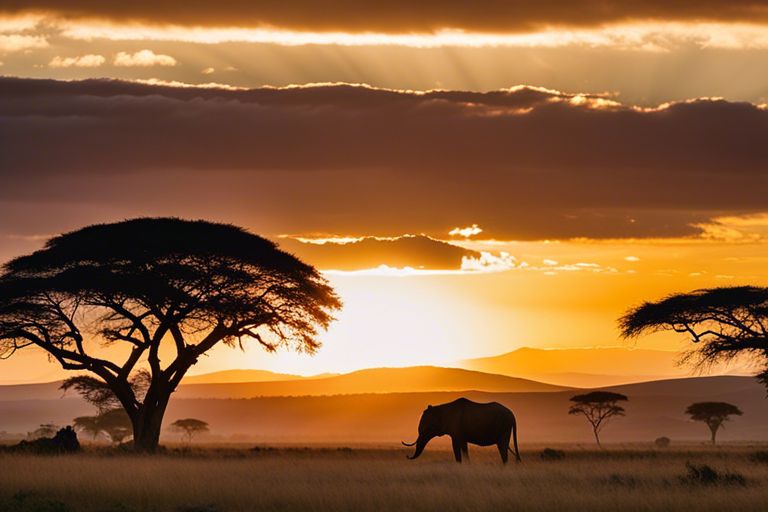
Safari Tips and Best Practices
Many travelers begin on a safari to Ngorongoro Crater with high hopes of witnessing the incredible wildlife that roams the area. To make the most of your safari experience and ensure the safety and well-being of the animals, it is necessary to follow some key tips and best practices.
- Respect the wildlife and keep a safe distance at all times.
- Listen to your guide’s instructions and follow park rules.
- Do not litter or disturb the natural environment.
- Stay inside the vehicle unless your guide gives you permission to exit.
This will not only enhance your safari experience but also contribute to the preservation of the delicate ecosystem in Ngorongoro Crater. This means more sustainable tourism practices and a brighter future for the wildlife that calls this place home.
Optimal Times for Wildlife Viewing
Tips for the best times to maximize your chances of seeing a wide variety of wildlife in Ngorongoro Crater include early morning and late afternoon game drives. During these times, animals are most active, providing excellent opportunities for sightings. Avoid the midday sun when many animals seek shade and rest.
Responsible Tourism and Conservation Efforts
To ensure the long-term conservation of Ngorongoro Crater’s wildlife and habitats, it is crucial for visitors to practice responsible tourism. This includes supporting eco-friendly accommodations, respecting wildlife, and contributing to conservation efforts through donations or volunteering.
Conservation initiatives in the area focus on preserving the natural balance of the ecosystem, protecting endangered species, and sustainable wildlife management practices. By being mindful of your impact on the environment and supporting these efforts, you can play a vital role in safeguarding the future of Ngorongoro Crater and its magnificent inhabitants.
### Summing up
Presently, you have been provided with a comprehensive overview of the diverse wildlife that inhabits the Ngorongoro Crater. From the majestic elephants and elusive leopards to the vibrant flamingos and playful hippos, this guide has outlined the rich array of animals you can expect to encounter during a visit to this breathtaking conservation area. Remember to keep a keen eye out for all the fascinating creatures that call this UNESCO World Heritage Site home, and be prepared for an unforgettable safari experience filled with awe-inspiring sightings and memories that will last a lifetime.
FAQ
Q: What is Ngorongoro Crater known for?
A: The Ngorongoro Crater is known for its incredible wildlife diversity and stunning landscapes. It is home to a wide variety of animals, making it a popular destination for safari enthusiasts.
Q: What animals can I expect to see in the Ngorongoro Crater?
A: Visitors to the Ngorongoro Crater can expect to see a wide range of animals, including lions, elephants, buffaloes, rhinos, leopards, cheetahs, zebras, wildebeest, and many more. The crater is also a birdwatcher’s paradise, with over 500 species of birds.
Q: What is the best time of year to visit the Ngorongoro Crater for wildlife viewing?
A: The best time to visit the Ngorongoro Crater for wildlife viewing is during the dry season, from June to September. During this time, animals are easier to spot as they gather around water sources, and the vegetation is less dense, providing better visibility.
Q: Are there any conservation efforts in place to protect the animals in the Ngorongoro Crater?
A: Yes, the Ngorongoro Conservation Area Authority (NCAA) manages the Ngorongoro Crater and implements various conservation initiatives to protect the wildlife and their natural habitat. These efforts include anti-poaching patrols, community engagement programs, and sustainable tourism practices.
Q: Can I go on a guided safari in the Ngorongoro Crater?
A: Yes, guided safaris are a popular way to explore the Ngorongoro Crater. Experienced guides will take you on game drives to ensure you have the best chance of spotting the diverse wildlife in the area. It is recommended to book your safari with a reputable tour operator to have a safe and informative experience.

